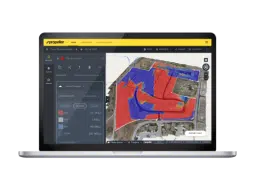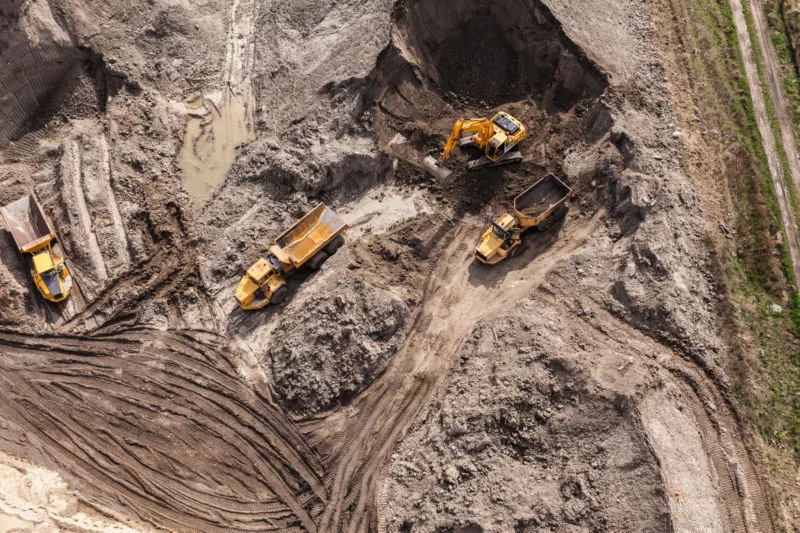2019 Construction Industry Trends and Predictions
A deficit in project data on construction sites is costing businesses $177B annually. Compared to other sectors, civil construction has lagged behind in tech adoption and productivity for decades.
But new tools, like commercial drones for construction, survey data platforms, and autonomous machines, are revolutionizing worksite measurement and management, improving efficiency, and reducing safety risks.
Construction faces a $1.6 trillion productivity gap
According to the McKinsey Global Institute (MGI), “abundant gains are at stake. MGI’s research found that if construction productivity were to catch up with that of the total economy—and it can—the sector’s value added would increase by an estimated $1.6 trillion, adding about two percent to the global economy.”
This presents a huge opportunity and motivation for businesses to digitize and modernize.
Digitization hasn’t been a priority in the past
What has led the industry to this point of vast under-digitization? When we look at the last few decades in construction, we see how vital survey information and data was expensive and time-intensive to acquire. It meant that people worked with what data they had. Fluff factors and huge write-offs were common.
Beyond this data dearth, the industry has the additional challenge of its decentralization: construction happens everywhere with highly variable demand. All of which discourages R&D and keeps building materials simple, sturdy, and assembled using tried-and-true methods.
For those in the industry, this news is nothing new.
Alarms have been sounded again and again in the past fifty years. But with new drone-based tools and automation technology becoming commoditized, there is a real opportunity to change things for the better, one worksite at a time.
How can better, up-to-date project data close the productivity gap, digitize worksites, and prepare them for the future?
Drone surveying has revolutionized how construction sites get data today. It’s only taken a few years for commercial drones in construction to become affordable tools for the jobsite. Government deregulation has followed, allowing for their use worldwide.
We can expect the cost of survey data to continue to decrease while technology becomes more and more sophisticated. In light of that, let’s see what challenges and potential lay ahead.
Future challenges
To give an idea of scale and value for such a huge industry, McKinsey shows that construction productivity growth trails the total world economy growth by 1.8 percentage points, whereas manufacturing outpaces it by 0.8 percentage points.
Closing that gap with the economy would increase the construction industry’s value by an estimated (and staggering) $1.6 trillion. That’s a lot of money on the table, and there are a number of ways to close the gap.
Committed adoption of technology
Technology adoption is a marathon not a sprint. Leaders often struggle to sustain their digital initiatives once they are past the excitement of the launch stage because their attention and resources are divided.
“That means companies often see lower than expected returns from their digital investments and thus have little incentive to keep funding them, especially if budget pressures increase,” according to McKinsey.
Skilled labor shortage
Another co-existent issue is an increasing shortage of skilled labor. The construction industry can expect an ever-more competitive hiring market, which, coupled with stagnant productivity, means pressure both inside and out.
Construction is one of the least digitized sectors in the world, according to MGI’s digitization index. But its customers are becoming increasingly sophisticated—and so are potential applicants. Digitization will play a key role in younger candidates’ employment decisions, and companies that recognize this will be better suited for recruiting in the future workforce.
Keeping projects on time and on budget is hard, but necessary
While there are many ways new drone and data processing technology can streamline and improve facets of the industry, we’ll be focusing on how it can keep projects on time and on budget, improving productivity.
As those who’ve worked even a small job know, geological surprises often account for delays and overrun costs. Discrepancies between on-the-ground conditions and estimates from initial surveys can mean expensive eleventh-hour changes to a project’s scope, design, and timeline.
Most of this can be remedied with up-to-date, accurate data, which begs the question of how do you get it? One easy first step is embracing drones in construction as a surveying tool on every worksite.
Learn about this and more in Propeller’s 2019 Construction Industry Trends and Predictions Report.







